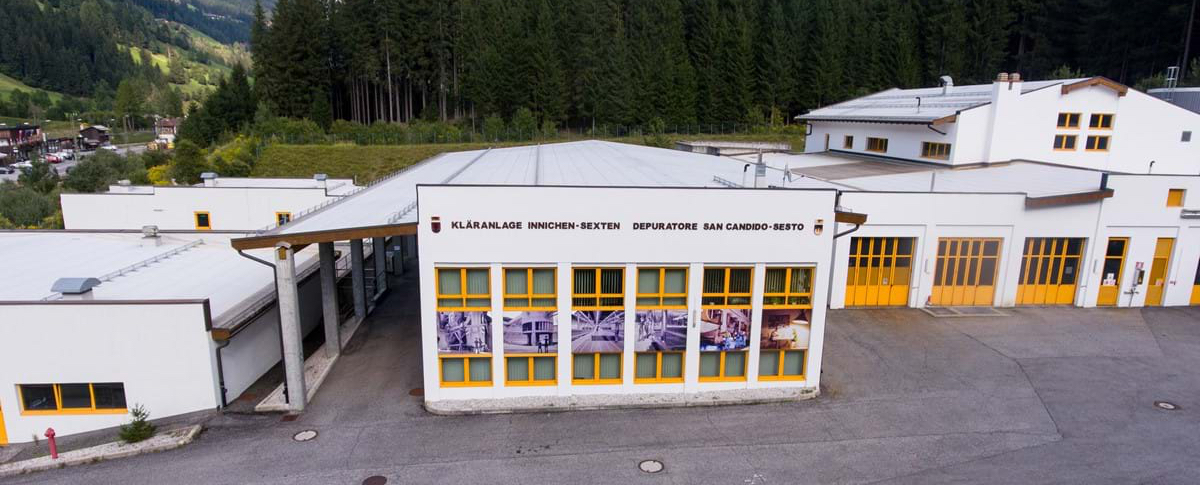Digital twin helps wastewater treatment plant reduce aeration energy by 10%
A wastewater treatment plant near Tyrol, Italy, wanted to minimize the energy consumption of its activated sludge process while continuing to meet effluent requirements. By deploying Xylem Treatment System Optimization (TSO), which creates digital models of treatment processes, the plant reduced energy consumption by 10%, despite a 33% load increase. The plant also reduced nitrogen in effluent by 16% and total phosphorus by 25%.
ARA Pustertal AG operates the Innichen-Sexten wastewater treatment plant near Tyrol, Italy. The treatment plant, which has a capacity for 36,000 inhabitants, has a conventional activated sludge process, with pre-denitrification and biological phosphorus removal.
The wastewater treated at the plant consists of approximately 25% municipal wastewater, 25% commercial wastewater, and 50% wastewater from tourism. The commercial wastewater includes water from local dairies, a juice producer, and a bacon and sausage producer – accounting for the largest share of commercial wastewater.
Using data to deliver recommendations
For this project, the operator selected Xylem Treatment System Optimization (TSO). This solution provides real-time analysis of operational parameters at treatment plants, then delivers recommendations to plant operators to help them run their plants more effectively, safely and at reduced cost.
TSO uses a decision intelligence approach that maximizes a plant’s data to deliver highly actionable and quantifiable outcomes. As data gets updated in real-time, it is immediately fed back into the system for continuous refinement and improvement.
“Most energy usage in wastewater treatment is aeration and pumping,” says Konrad Engl, Managing Director, ARA Pustertal AG. “Aeration introduces dissolved oxygen into wastewater to support aerobic oxidation and nitrogen removal. Pumping is used to move and recirculate water and sludge through the sequence of treatment processes. Sewage aeration at a wastewater treatment plant accounts for the majority of a plant’s total electricity demand.”
For the Innichen-Sexten plant, the objective was to support safe compliance with effluent limits while minimizing the energy consumption of the activated sludge system. The plant wanted to optimize oxygen input and automate recirculation control.

A digital twin model with neural networks
Based on the plant’s objectives, Xylem developed a digital twin model of the plant’s treatment processes. This model, power by artificial neural networks, would enable the plant to understand different correlations between given influent loads, quantities, temperatures, aeration profiles and other process variables, along with the resulting degradation rates and effluent concentrations.
The TSO system calculated proposals for different scenarios that would ensure reliable compliance of the effluent values with minimal energy consumption and chemical use. This also included calculations of the financial impact of each step.
The digital twin model provided forecasts based on the input values, and the TSO system calculated the most favorable operating setting (aeration of the individual line, recirculation, operating mode, etc.) by selectively changing the control variables.
10% reduction in energy consumption
The TSO system can either deliver recommendations to plant operators, which are then manually performed, or it can directly connect to the wastewater treatment plant’s control system. If the system is in manual mode, the operators receive notifications with recommendations to adjust operations manually. If the system is in automatic mode, TSO controls the treatment plant with recommendations that the operators supervise.
“With the pressing needs of gaining energy efficiency and reducing costs, Xylem’s TSO allowed us to leverage decision intelligence – using data to optimize processes, obtain better results and reduce energy use,” says Konrad Engl, Managing Director, ARA Pustertal AG.
After running TSO for four months, the treatment plant decreased energy use by 10%, even though the inlet pollution load had significantly increased, by 33%. The plant also reduced total nitrogen by 16% and total phosphorous by 25%, compared to the normal operation of the plant, which already had excellent purification performance.
Learn more
See how Xylem Treatment System Optimization can improve your plant’s processes. One treatment plant in Germany reduced energy from aeration by 30% using TSO.
Request information

